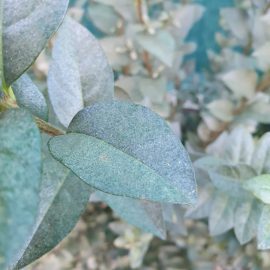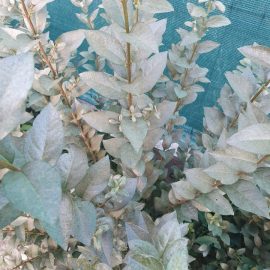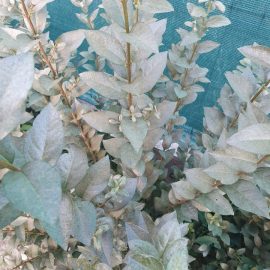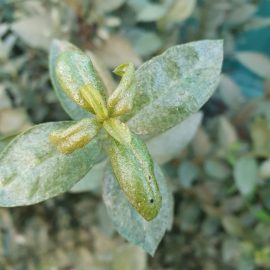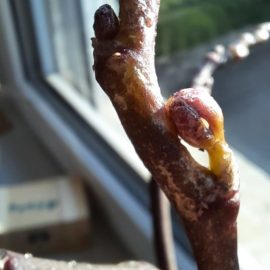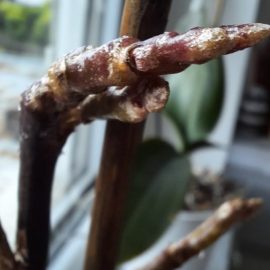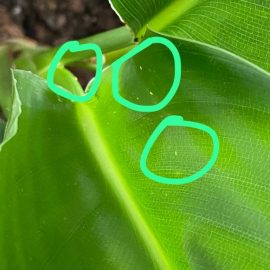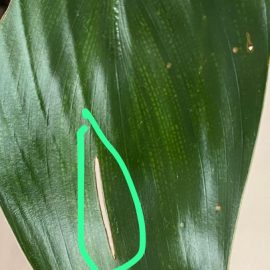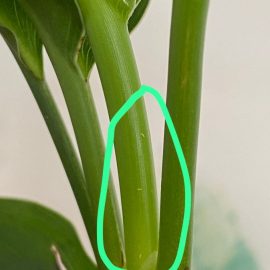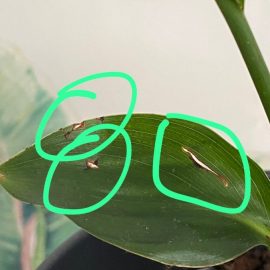Thrips – pest management
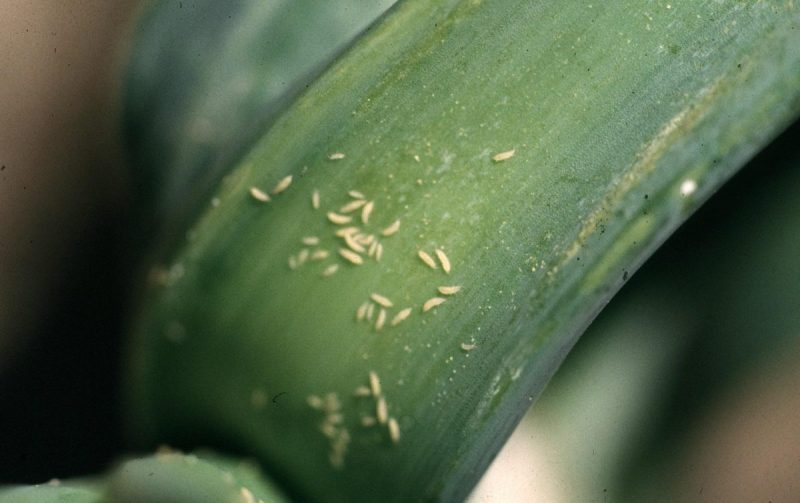
Thrips are a dangerous pest that attacks both plants in protected areas and field crops. It is very small, but sometimes the insects can be seen on the surface of leaves or flowers.
The wheat thrips, Haplothrips tritici
Prevalence. It is a species reported in the late nineteenth century in the former Soviet Union and it is widespread in Europe, Africa, and Asia.
Description. The adult has a body that is 1.2-1.5 mm long, with hues from dark brown to black, the wings being narrow with one rib. The larva is orange-red, but the head, legs, and last abdominal segment are black.





Biology and ecology. It is a univoltine species, which produces one generation per year, developing from May to June-July of the following year, of which about 57 days are spent on the host plant and the remaining 309 in the soil. The female lays 20-22 eggs. The primary larvae appear in May-June on inflorescences, and the secondary ones after another 2-4 days. The larval density can be 10-70 specimens/spike, and the lifespan is 20-30 days.
Attacked plants and damages. The spike can be partially or completely destroyed, as the attack is manifested on the spike’s root (radial attack) or the inflorescences (floral attack). The affected organs display withering, yellowing, or whitening, followed by changes in shape. The attack is stronger if the monitoring takes place later or it lasts much longer than normal and can cause the phenomenon known as whitening of the spikes (total or partial).
Control: The deep plowing at 20-25 cm ensures the destruction of 90% of the larvae that are hidden with the vegetal remains in the soil. Chemical treatments should be carried out with various approved products such as:
Recommended products
-
You can find products on a different store
Change Store -
You can find products on a different store
Change Store -
You can find products on a different store
Change Store -
You can find products on a different store
Change Store -
You can find products on a different store
Change Store -
You can find products on a different store
Change Store -
You can find products on a different store
Change Store -
You can find products on a different store
Change Store -
You can find products on a different store
Change Store -
You can find products on a different store
Change Store -
You can find products on a different store
Change Store -
You can find products on a different store
Change Store -
You can find products on a different store
Change Store -
You can find products on a different store
Change Store -
You can find products on a different store
Change Store -
You can find products on a different store
Change Store -
You can find products on a different store
Change Store -
You can find products on a different store
Change Store -
You can find products on a different store
Change Store -
You can find products on a different store
Change Store -
You can find products on a different store
Change Store -
You can find products on a different store
Change Store -
You can find products on a different store
Change Store -
You can find products on a different store
Change Store
The grass thrips, Haplothrips aculeatus
Prevalence. It is a species that commonly attacks cereals, but with an obvious preference for rye crops.
Description. It has a black body, 2 mm long, the males being smaller than the females. The egg is ovoid and translucent, and the larvae are red-orange, 1.8 mm long. The pupa is the same color as the larva and is 1.7 mm long.




Biology and ecology. They produce one generation per year and overwinter in the adult stage, in the remains of the attacked plants. Adults and larvae populate the pod of the last leaf, lay eggs and feed on the organs of the spike, flowers, and grains in the milk-wax phase. The development of a generation takes 50-56 days.
Attacked plants and damages. A species reported on many host plants, spontaneous or cultivated (black-grass, oats, cattail, alfalfa, mullen, lawn, wheat, rye, clover, corn, etc.).
Control: The deep plowing at 20-25 cm ensures the destruction of 90% of the larvae that are hidden with the vegetal remains in the soil. Chemical treatments should be carried out with various approved products such as:
Recommended products
-
You can find products on a different store
Change Store -
You can find products on a different store
Change Store -
You can find products on a different store
Change Store -
You can find products on a different store
Change Store -
You can find products on a different store
Change Store -
You can find products on a different store
Change Store -
You can find products on a different store
Change Store -
You can find products on a different store
Change Store -
You can find products on a different store
Change Store -
You can find products on a different store
Change Store -
You can find products on a different store
Change Store -
You can find products on a different store
Change Store -
You can find products on a different store
Change Store -
You can find products on a different store
Change Store -
You can find products on a different store
Change Store -
You can find products on a different store
Change Store -
You can find products on a different store
Change Store -
You can find products on a different store
Change Store -
You can find products on a different store
Change Store -
You can find products on a different store
Change Store -
You can find products on a different store
Change Store -
You can find products on a different store
Change Store -
You can find products on a different store
Change Store -
You can find products on a different store
Change Store
The barley thrips, Limothrips denticornis
Prevalence. It is specific to rye cultures. It is widespread throughout Europe, Africa, and North America and it prefers gramineous plants.
Description. The adult has a body that is 1.3-1.6 mm long, colored in dark yellow-brown. The last abdominal segment is sharp. The ovipositor is short, consisting of two pairs of toothed valves.


Biology and ecology. Species that produce 2 annual generations, the first developing on the pods of cereal leaves in autumn, and the second in the spikes of cereals, in spring.
Attacked plants and damages. It feeds on various cultivated grasses (wheat, barley, rye, etc.) and spontaneous plants as well. The attack is manifested at the spikes level, causing partial atrophies (terminal or basal), or total atrophies. At the stem level, the attack is manifested in the form of bends and twists, on the upper region of the last internode and the spike pod, leading to the apparition of white spots with reddish hues.
Control: The deep plowing at 20-25 cm ensures the destruction of 90% of the larvae that are hidden with the vegetal remains in the soil. Chemical treatments should be carried out with various approved products such as:
Recommended products
-
You can find products on a different store
Change Store -
You can find products on a different store
Change Store -
You can find products on a different store
Change Store -
You can find products on a different store
Change Store -
You can find products on a different store
Change Store -
You can find products on a different store
Change Store -
You can find products on a different store
Change Store -
You can find products on a different store
Change Store -
You can find products on a different store
Change Store -
You can find products on a different store
Change Store -
You can find products on a different store
Change Store -
You can find products on a different store
Change Store -
You can find products on a different store
Change Store -
You can find products on a different store
Change Store -
You can find products on a different store
Change Store -
You can find products on a different store
Change Store -
You can find products on a different store
Change Store -
You can find products on a different store
Change Store -
You can find products on a different store
Change Store -
You can find products on a different store
Change Store -
You can find products on a different store
Change Store -
You can find products on a different store
Change Store -
You can find products on a different store
Change Store -
You can find products on a different store
Change Store
The oat thrips, Stenothrips graminum
Prevalence. It is a species found in Europe, and it is less known in Asia and North America.
Description. The female has a body that is 0.9-1.1 mm long, colored in yellow-gray or brown, and the male is 0.8-0.9 mm long.

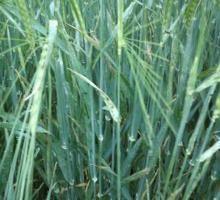

Biology and ecology. The oats thrips is a species that produces a generation once every 1-2 years, overwintering in the adult stage in the soil at a depth of 30-50 cm, in chambers made from fine soil granules. After feeding, the females lay eggs for 7-12 days, 3-4 eggs/day (about 100 eggs in total), and on one spike there can be about 115 eggs. After an incubation period of about 7 days, the larvae appear, which feed on the floral organs or the new grains, for two weeks.
Attacked plants and damages. Species are known to infest spontaneous grasses, cultivated cereals, etc. Through their way of feeding (they suck the intracellular fluid), discolored spots appear on leaves, pods, stems, and blades, leading to their withering.
Control: The deep plowing at 20-25 cm ensures the destruction of 90% of the larvae that are hidden in the vegetal remains in the soil. Chemical treatments should be carried out with various approved products such as:
Recommended products
-
You can find products on a different store
Change Store -
You can find products on a different store
Change Store -
You can find products on a different store
Change Store -
You can find products on a different store
Change Store -
You can find products on a different store
Change Store -
You can find products on a different store
Change Store -
You can find products on a different store
Change Store -
You can find products on a different store
Change Store -
You can find products on a different store
Change Store -
You can find products on a different store
Change Store -
You can find products on a different store
Change Store -
You can find products on a different store
Change Store -
You can find products on a different store
Change Store -
You can find products on a different store
Change Store -
You can find products on a different store
Change Store -
You can find products on a different store
Change Store -
You can find products on a different store
Change Store -
You can find products on a different store
Change Store -
You can find products on a different store
Change Store -
You can find products on a different store
Change Store -
You can find products on a different store
Change Store -
You can find products on a different store
Change Store -
You can find products on a different store
Change Store -
You can find products on a different store
Change Store
The greenhouse thrips, Heliothrips haemorrhoidalis
Prevalence. It is a species native to tropical America, from where it has spread all over the globe.
Description. The adult has a blackish-brown body, 1.2-1.5 mm long. The larva is brownish-yellow, 1 mm long.




Biology and ecology. The pest develops in natural conditions only in very hot areas and overwinters in the egg stage. With the help of the oviscape, the female lays eggs on the foliar limb. After an incubation period of 5-6 days, the larvae hatch, which feed by stinging the epidermis of the leaves.
Attacked plants and damages. The greenhouse thrips develop well in field conditions, in very hot areas, on different plants: citrus, avocado, mango, coffee, grapevine, apple trees, pear trees, tea crops, spinach, geranium, etc. In greenhouse conditions, it causes damage to a large number of plants: azaleas, ficuses, roses, carnations, chrysanthemums, etc. It attacks the leaves, shoots, and flowers, leading to the formation of white spots. The attack on the flowers leads to their deformation. In case of strong attacks, a total or partial necrosis of the organs can be observed, and the attacked plants remain small.
Control: In case of severe attacks, it is recommended to apply treatments with specific insecticides:
Recommended products
-
You can find products on a different store
Change Store -
You can find products on a different store
Change Store -
You can find products on a different store
Change Store -
You can find products on a different store
Change Store -
You can find products on a different store
Change Store -
You can find products on a different store
Change Store -
You can find products on a different store
Change Store -
You can find products on a different store
Change Store -
You can find products on a different store
Change Store -
You can find products on a different store
Change Store -
You can find products on a different store
Change Store -
You can find products on a different store
Change Store -
You can find products on a different store
Change Store -
You can find products on a different store
Change Store -
You can find products on a different store
Change Store -
You can find products on a different store
Change Store -
You can find products on a different store
Change Store -
You can find products on a different store
Change Store -
You can find products on a different store
Change Store -
You can find products on a different store
Change Store -
You can find products on a different store
Change Store -
You can find products on a different store
Change Store -
You can find products on a different store
Change Store -
You can find products on a different store
Change Store
The western flower thrips, Frankliniella occidentalis
Prevalence. It is a species native to North America, in the United States. It attacks plants grown in the field such as peach, apricot, plum, grapefruit, cotton, beets, beans, tomatoes, roses, carnations, gerbera, Parma violets, chrysanthemums, etc.
Description. The female has a variably colored body, from light yellow to dark brown, 1.2-1.9 mm long. The male is smaller, 0.9 mm long, colored in light yellow. The larva after hatching is white, turning yellow in the more advanced stages.


Biology and ecology. It overwinters in the adult stage in the soil and as a mature larva in vegetative buds and flower buds. The incubation period lasts 4-13 days, being strongly influenced by temperature variations. After hatching, the larvae cross the epidermis of the tissue, coming to the surface where they feed for 6-19 days.
Attacked plants and damages. In general, the larvae and adult females are phytophagous, feeding by sucking the intracellular juice or the pollen and nectar. On the leaves of the attacked ornamental plants, one can notice the existence of a silver color, due to the deformation of the attacked tissues. The pest causes significant damage to the crops of tomatoes, peppers, cucumbers, or some flower species (carnations, gerbera, chrysanthemums) in the greenhouse. When the attack takes place before flowering, the flower buds no longer open. The attack of thrips is often confused with the attack of mites.
Control: In case of strong attacks, it is recommended to apply control chemicals, using insecticides such as::
Recommended products
-
You can find products on a different store
Change Store -
You can find products on a different store
Change Store -
You can find products on a different store
Change Store -
You can find products on a different store
Change Store -
You can find products on a different store
Change Store -
You can find products on a different store
Change Store -
You can find products on a different store
Change Store -
You can find products on a different store
Change Store -
You can find products on a different store
Change Store -
You can find products on a different store
Change Store -
You can find products on a different store
Change Store -
You can find products on a different store
Change Store -
You can find products on a different store
Change Store -
You can find products on a different store
Change Store -
You can find products on a different store
Change Store -
You can find products on a different store
Change Store -
You can find products on a different store
Change Store -
You can find products on a different store
Change Store -
You can find products on a different store
Change Store -
You can find products on a different store
Change Store -
You can find products on a different store
Change Store -
You can find products on a different store
Change Store -
You can find products on a different store
Change Store -
You can find products on a different store
Change Store














































































































































































































































































































































































































































